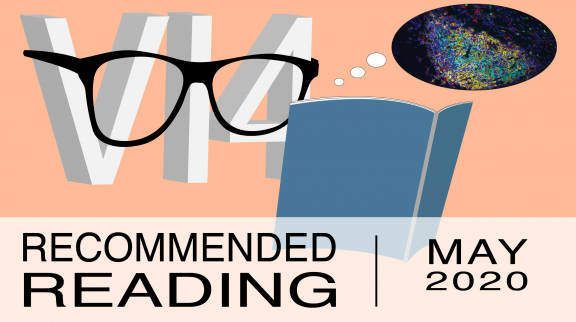The fields of infection biology, immunobiology and inflammation research is varied and ever-expanding. Researchers the world over are making discoveries that contribute greatly to our collective understanding of health and disease. VI4 is committed to providing our members, students, and community resources to aid in knowledge-building in these core VI4 research areas. Please check out our current curated recommended reading list below from scientists across the country.
Recommended Reading - February 1, 2021
VI4 Curation Team
- Fusobacterium nucleatum adheres to Clostridioides difficile via the RadD adhesin to enhance biofilm formation in intestinal mucus. Engevik M, et al. in Gastroenterology, November 20, 2020
- Regulatory T Cell-Derived TGF-β1 Controls Multiple Checkpoints Governing Allergy and Autoimmunity. Turner J, et al. in Cell Immunity, October 20, 2020
- Restoring metabolism of myeloid cells reverses cognitive decline in ageing. Minhas P, et al. in Nature, January 20, 2021
- Tetracycline Antibiotics Induce Host-Dependent Disease Tolerance to Infection. Colaco H, et al. in Cell Immunity, October 14, 2020
- Heterogeneous bone-marrow stromal progenitors drive myelofibrosis via a druggable alarmin axis. Leimkuhler N, et al. in Cell Stem Cell, December 9, 2020
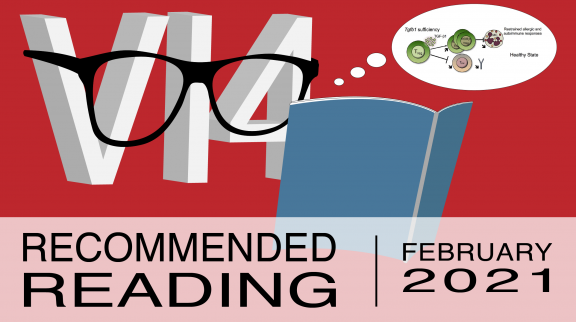
Recommended Reading - January 3rd, 2021
VI4 Curation Team
- Mammalian lipid droplets are innate immune hubs integrating cell metabolism and host defense. Bosch M, et al. in Science, October 16, 2020
- Developmental Relationships of Four Exhausted CD8+ T Cell Subsets Reveals Underlying Transcriptional and Epigenetic Landscape Control Mechanisms. Beltra JC, et al. in Immunity, May 19, 2020
- T cells with dysfunctional mitochondria induce multimorbidity and premature senescence. Desdin-Mico G, et al. in Science, June 19, 2020
- Commensal Microbiota Modulation of Natural Resistance to Virus Infection. Stefan K, et al. in Cell, November 25, 2020
- The cancer microbiome atlas: a pan-cancer comparative analysis to distinguish tissue-resident microbiota from contaminants. Dohlman A, et al. in Cell Host & Microbe, December 30, 2020
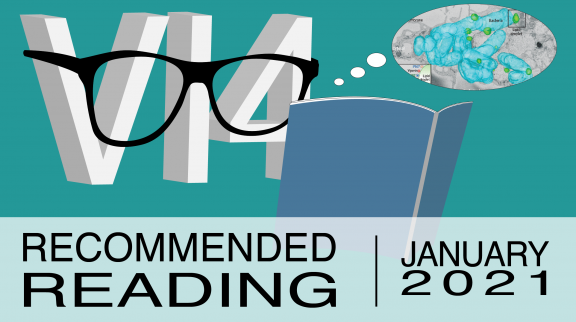
Tags
Recommended Reading - December 6th, 2020
VI4 Curation Team
- Single-Cell Mapping of Human Brain Cancer Reveals Tumor-Specific Instruction of Tissue-Invading Leukocytes. Friebel, et al. in Cell, June 25, 2020
- A probiotic yeast-based immunotherapy against Clostridioides difficile infection. Chen K, et al. in Science Translational Medicine, October 28, 2020
- Reconstitution and visualization of HIV-1 capsid-dependent replication and integration in vitro. Christensen D, et al. in Science, October 9, 2020
- Fgr Kinase is required for proinflammatory macrophage activation during diet-induced obesity. Acin-Perez R, et al. in Nature Metabolism, September 17, 2020
- Highly multiplexed spatial mapping of microbial communities. Shi H, et al. in Nature, December 2, 2020
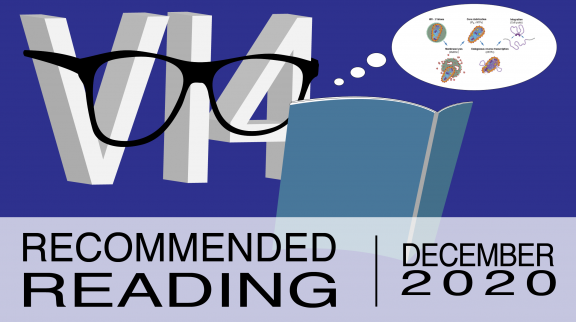
Recommended Reading - November 1st, 2020
VI4 Curation Team
- Interpersonal Gut Microbiome Variation Drives Susceptibility and Resistance to Cholera Infection. Alavi S, et al. in Cell, June 25, 2020
- Immunogenomic Landscape of Hematological Malignancies. Dufva O, et al. in Cancer Cell, July 9, 2020
- Programmable multistage drug delivery to lymph nodes. Schudel A, et al. in Nature Nanotechnology, June 10, 2020
- Single-cell RNA sequencing of murine islets shows high cellular complexity at all stages of autoimmune diabetes. Zakharov P, et al. in Journal of Experimental Medicine, April 6, 2020
- Selective and cross-reactive SARS-CoV-2 T cell epitopes in unexposed humans. Mateus J, et al. in Science, October 2, 2020
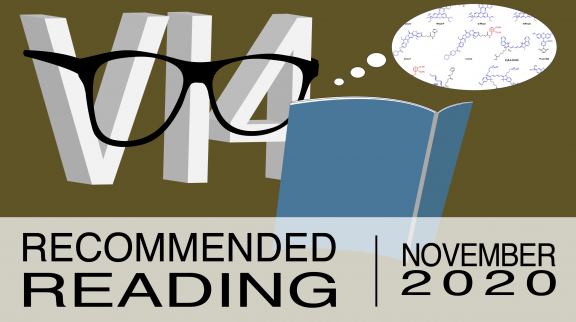
Recommended Reading - October 4th, 2020
VI4 Curation Team
- Dendritic cell–derived hepcidin sequesters iron from the microbiota to promote mucosal healing. Bessman N, et al. in Science, April 10, 2020
- Unsupervised machine learning reveals risk stratifying glioblastoma tumor cells. Leelatian N, et al. in eLife, June 23, 2020
- Glycogen metabolism regulates macrophage-mediated acute inflammatory responses. Ma J, et al. in Nature Communications, April 14, 2020
- Targets of T Cell Responses to SARS-CoV-2 Coronavirus in Humans with COVID-19 Disease and Unexposed Individuals. Grifoni A, et al. in Cell, June 25, 2020
- Follicular helper T cell profiles predict response to costimulation blockade in type 1 diabetes. Edner N M, et al. in Nature Immunology, August 3, 2020
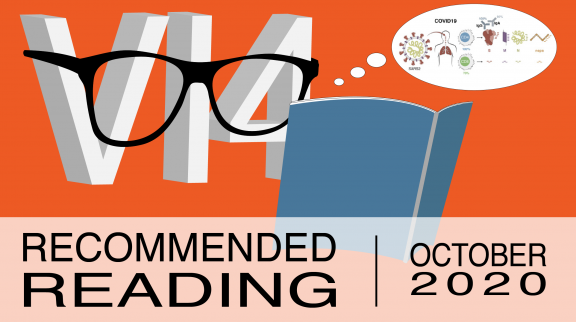
Recommended Reading - September 6th, 2020
VI4 Curation Team
- The stepwise assembly of the neonatal virome is modulated by breastfeeding. Liang G, et al. in Nature, May 15, 2020
- Association between supratentorial pediatric high-grade gliomas involved with the subventricular zone and decreased survival: a multi-institutional retrospective study. Mistry A, et al. in Journal of Nuerosurgery, May 22, 2020
- Cardiovascular effects of glucagon-like peptide 1 receptor agonists: from mechanistic studies in humans to clinical outcomes. Heuvelman V, et al. in Cardiovascular Research, April 1, 2020
- The MHC-II peptidome of pancreatic islets identifies key features of autoimmune peptides. Wan X, et al. in Nature Immunology, March 9, 2020
- Bacterial polyphosphates interfere with the innate host defense to infection. Roewe J, et al. in Nature Communications, August 12, 2020
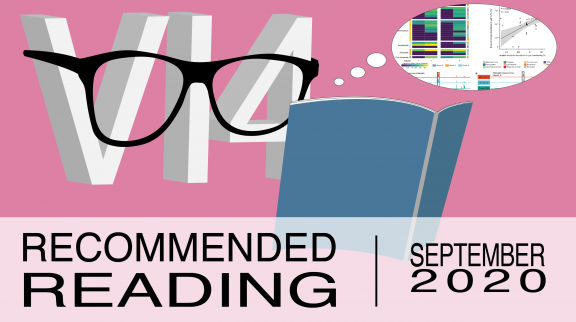
Recommended Reading - August 2nd, 2020
VI4 Curation Team
- A nutrient-limited screen unmasks rifabutin hyperactivity for extensively drug-resistant Acinetobacter baumannii. Luna B, et al. in Nature Microbiology, June 8, 2020
- SARS-CoV-2 infection protects against rechallenge in rhesus macaques. Chandrashekar A, et al. in Science, May 20, 2020
- Dysbiosis-Induced Secondary Bile Acid Deficiency Promotes Intestinal Inflammation. Sinha S, et al. in Cell Host & Microbe, April 8, 2020
- The human tumor microbiome is composed of tumor type-specific intracellular bacteria. Nejman D, et al. in Science, May 29, 2020
- Bcl6 and Blimp1 Reciprocally Regulate ST2 + Treg-cell Development in the Context of Allergic Airway Inflammation. Koh B, et al. in The Journal of Allergy and Clinical Immunology, March 13, 2020
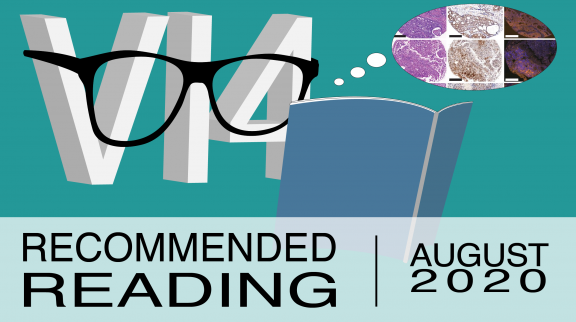
Recommended Reading - July 5th, 2020
VI4 Curation Team
- An orally bioavailable broad-spectrum antiviral inhibits SARS-CoV-2 in human airway epithelial cell cultures and multiple coronaviruses in mice. Sheahan T, et al. in Science Translational Medicine, April 6, 2020
- Spatially Distinct Physiology of Bacteroides Fragilis Within the Proximal Colon of Gnotobiotic Mice. Donaldson G, et al. in Nature Microbiology, March 9, 2020
- Evolution of multifunctionality through a pleiotropic substitution in the innate immune protein S100A9. Harman J, et al. in eLife, April 7, 2020
- DNA vaccine protection against SARS-CoV-2 in rhesus macaques. Jingyou Y, et al. in Science, May 20, 2020
- ILC2s Amplify PD-1 Blockade by Activating Tissue-Specific Cancer Immunity. Moral JA, et al. in Nature, February 19, 2020
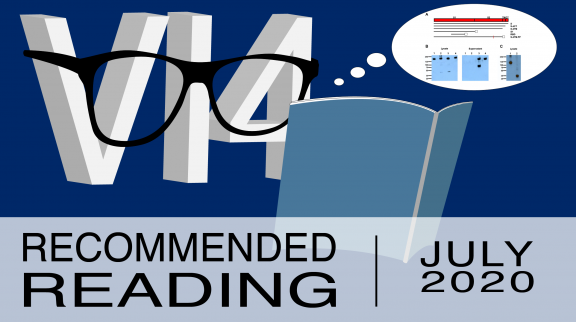
Recommended Reading - June 7th, 2020
VI4 Curation Team
- Sex-specific adipose tissue imprinting of regulatory T cells. Vasanthakumar A, et al. in Nature, February 26, 2020
- Metabolites released from apoptotic cells act as tissue messengers. Medina C, et al. in Nature, March 18, 2020
- Transsulfuration Activity Can Support Cell Growth upon Extracellular Cysteine Limitation. Zhu J, et al. in Cell Metabolism, November 5, 2019
- Decoy exosomes provide protection against bacterial toxins. Keller M D, et al. in Nature, March 4, 2020
- Tuft-Cell-Derived Leukotrienes Drive Rapid Anti-helminth Immunity in the Small Intestine but Are Dispensable for Anti-protist Immunity. McGinty J, et al. in Cell Press, March 17, 2020
- Collective Viral Spread Mediated by Virion Aggregates Promotes the Evolution of Defective Interfering Particles.. Andreu-Moreno, Sanjuan, Rafael in American Society for Microbiology Journal, January 7, 2020
- JC Virus infected choroid plexus epithelial cells produce extracellular vesicles that infect glial cells independently of the virus attachment receptor. O'Hara BA, et al. in PLOS Pathogens, March 4, 2020
- Fecal IgA Levels Are Determined by Strain-Level Differences in Bacteroides Ovatus and Are Modifiable by Gut Microbiota Manipulation. Yang C, et al. in Cell Host & Microbe, February 18, 2020
- Long-term dietary intervention reveals resilience of the gut microbiota despite changes in diet and weight. Fragiadais G, et al. in The American Journal of Clinical Nutrition, March 18, 2020
- Commensal Bacteria Modulate Immunoglobulin A Binding in Response to Host Nutrition. Huus K, et al. in Cell Host & Microbe, April 13, 2020

Recommended Reading - May 3rd, 2020
VI4 Curation Team
- N6-methyladenosine modification enables viral RNA to escape recognition by RNA sensor RIG-I. Lu M, et al. in Nature, April 5, 2020
- Targeted selection of HIV-specific antibody mutations by engineering B cell maturation. Saunders K, et al. in Science, December 6, 2019
- Transcriptomic and epigenetic mechanisms underlying myeloid diversity in the lung. Sajti E, et al. in Nature Immunology, January 20, 2020
- B cells and tertiary lymphoid structures promote immunotherapy response. Helmink B, et al. in Nature, January 15, 2020
- c-Kit-positive ILC2s exhibit an ILC3-like signature that may contribute to IL-17-mediated pathologies. Bernink J, et al. in Nature Immunology, November 13, 2019
- Structure‐Guided Design of a Group B Streptococcus Type III Synthetic Glycan–Conjugate Vaccine. Oldrini D, et al. in Chemistry Europe, February 14, 2020
- Antirotavirus IgA seroconversion rates in children who receive concomitant oral poliovirus vaccine: A secondary, pooled analysis of Phase II and III trial data from 33 countries. Baker JM, et al. in PLOS Medicine, December 30, 2019
- An anti-inflammatory eicosanoid switch mediates the suppression of type-2 inflammation by helminth larval products. de Los Reyes J M, et al. in Science, April 22, 2020
- Mutational signature in colorectal cancer caused by genotoxic pks+ E. coli. Pleguezuelos-Manzano C, et al. in Nature, February 27, 2020
- Antibiotic Degradation by Commensal Microbes Shields Pathogens. Gjonbalaj M, et al. in American Society for Microbiology Journal, January 14, 2020
